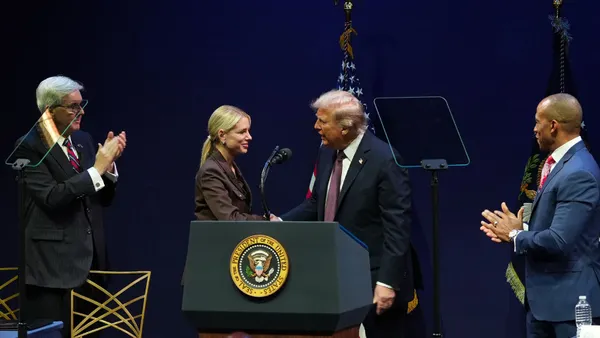Dive Brief:
- Math specialist Harry O’Malley embeds game mechanics in his classroom at Williamsville Central School District in Williamsville, New York, he wrote in Edutopia. By turning math into a game, he writes, students are engaged in approaching tangible problems and using multiple strategies to solve them.
- O'Malley breaks down the process into four smaller items to better engage students: an introduction, physical exploration, student presentation and formal learning, where teachers transition to more direct instruction.
- Throughout the process, O’Malley continues to assess what his students are learning, both by talking to them during different phases of the game as well as using opportunities for assessment within formal learning.
Dive Insight:
Using game-based methods is on the rise in classrooms as educators are discovering that this educational tool can enhance student learning. Students want to take part in the activity, and regardless of skill or knowledge level, they are still able to make meaningful contributions both for the group and for their own learning.
While O'Malley's story demonstrates its usefulness in teaching math, game-based learning methods can also be interwoven into a variety of subjects, making learning potentially easier, more engaging and likely more fun for students. In addition to math, the same techniques can be applied to English language arts, foreign language classes and other subjects, too. For example, on the Teachers of English as a Second Language website, the organization highlights dozens of ways to transform language lessons, writing and math into games including the Survivor Spelling Game, Mystery Object, The Grandfather and Name the Place.
Kids enjoy playing games and having fun. But it's not all about the enjoyment — the activity also taps into active learning and is championed by the California State University, Los Angeles in the chemistry and biochemistry department as one of the best ways to illustrate “the scientific method.” Engaging students, combined with giving them the opportunity to play active roles in their own learning, turn a classroom into a more dynamic environment that reminds young learners these subjects aren't so boring after all.












